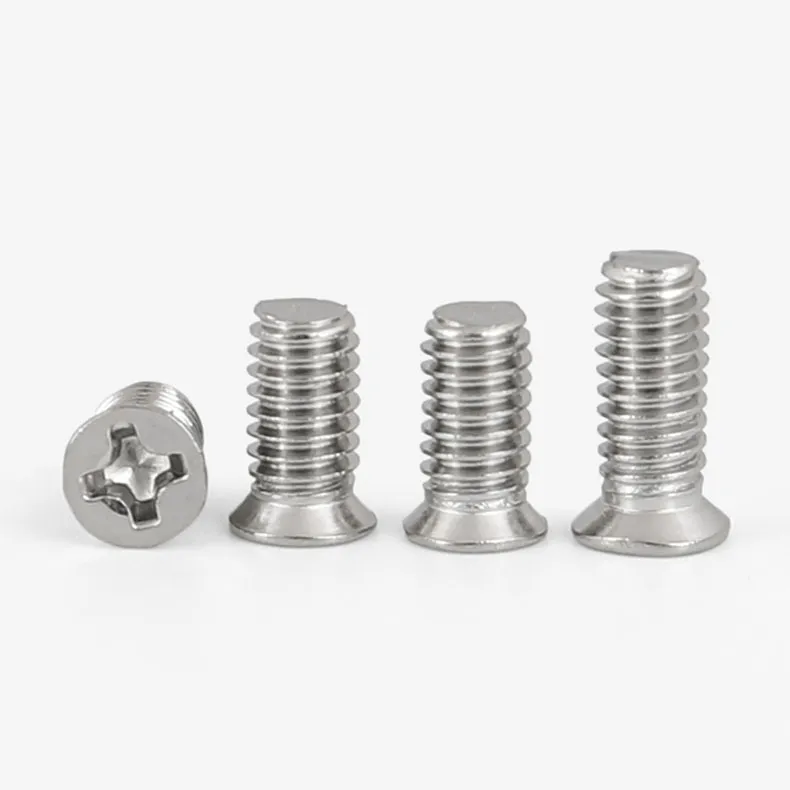

Understanding Hex Screws for Self-Tapping Applications and Their Benefits
ธ.ค. . 17, 2024 22:04 Back to list
Understanding Hex Screws for Self-Tapping Applications and Their Benefits
Understanding Hex Screws and Self-Tapping Technology
Hex screws, also known as hexagon socket screws or Allen screws, are a vital component in metalworking and construction industries. Their unique design, characterized by a hexagonal recess at the head, allows for easy tightening and loosening with a corresponding hex wrench or Allen key. This design not only enhances grip but also provides a clean and finished look, making hex screws a preferred choice in various applications.
On the other hand, self-tapping screws are engineered to create their own hole as they are driven into materials. Unlike standard screws that require pre-drilled holes, self-tapping screws have a sharp, pointed tip, and their threads are designed to cut into the material. This feature is especially beneficial in situations where speed and efficiency are paramount. When combining the benefits of hex screws with self-tapping technology, we get a robust fastening solution that offers both ease of installation and durability.
The Advantages of Hex Self-Tapping Screws
1. Time Efficiency One of the primary advantages of self-tapping screws is the time saved during installation. By negating the need for pre-drilled holes, they can significantly reduce labor costs and time spent on projects. This is particularly advantageous in large-scale constructions or rapid assembly line processes.
2. Versatile Applications Hex self-tapping screws are highly versatile. They can be used in a wide variety of materials, including wood, metal, and plastic. This flexibility makes them suitable for different industries, from automotive to electronics.
3. Increased Grip The hexagonal design provides a larger surface area for the wrench to grip, which allows for greater torque to be applied. This results in a more secure fastening that is less likely to loosen over time, which is crucial in applications where vibration and movement may be present.
4. Aesthetic Appeal The clean appearance of hex screws makes them ideal for visible applications. Their design can enhance the overall look of a finished product, making them popular in custom furniture design and consumer electronics.
5. Corrosion Resistance Many hex self-tapping screws are available with coatings that enhance their resistance to corrosion and environmental factors. Options like galvanized or stainless steel screws ensure that the fastening solutions remain effective under challenging conditions.
hex screws self tapping

Installation Tips
Installing hex self-tapping screws requires technique to ensure optimal performance. Here are some tips for effective installation
- Choose the Right Screw Select a screw that is appropriate for the material thickness and type you are working with. Factors to consider include the screw length, diameter, and thread count.
- Use the Correct Tool Always use the right size hex wrench to avoid stripping the head of the screw. This will help ensure that you can achieve the necessary torque without damaging the screw.
- Drill If Necessary While self-tapping screws can work without pre-drilling, larger or denser materials might benefit from a pilot hole to guide the screw and prevent material splitting.
- Apply Even Pressure For a secure hold, apply consistent and even pressure while driving the screw. Avoid excessive force, which can strip the threads or damage the material.
Conclusion
Hex self-tapping screws are an essential fastening solution that combines the advantages of hex design with the efficiency of self-tapping technology. Their versatility, time-saving installation, and durable nature make them a go-to choice in various applications. Understanding their features and best practices can help you make informed decisions for your projects, ensuring that your assemblies are both efficient and reliable. Whether you're a DIY enthusiast or a professional tradesperson, embracing hex self-tapping screws in your toolkit can bring significant benefits to your work.
Latest news
-
Hot Dip Galvanized Bolts-About LongZe|High Strength, Corrosion Resistance
NewsJul.30,2025
-
High-Strength Hot Dip Galvanized Bolts - Hebei Longze | Corrosion Resistance, Customization
NewsJul.30,2025
-
Hot Dip Galvanized Bolts-Hebei Longze|Corrosion Resistance&High Strength
NewsJul.30,2025
-
High-Strength Hot-Dip Galvanized Bolts-Hebei Longze|Corrosion Resistance&High Strength
NewsJul.30,2025
-
Hot Dip Galvanized Bolts-Hebei Longze|Corrosion Resistance&High Strength
NewsJul.30,2025
-
Hot Dip Galvanized Bolts - Hebei Longze | Corrosion Resistance, High Strength
NewsJul.30,2025

